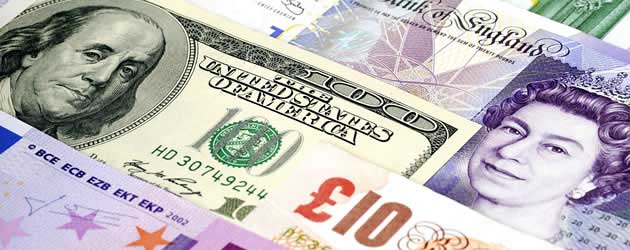
The Pound shot up against the majority of its currency peers late last night when markets reopened for the week in Asia, as traders came to terms with the latest twist in the US debt ceiling debacle.
On Friday hopes were high that Republicans and Democrats might be close to agreeing a deal to raise the US debt ceiling over the weekend, thereby removing the threat of a debilitating default from the world’s most important economy. This led to a bout of risk appetite, which sent the Pound lower against the US Dollar, the Canadian Dollar, the Australian Dollar and the New Zealand Dollar.
However, talks broke down over the weekend causing the US government shutdown to continue for a 14th consecutive day and this spooked investors, effectively reversing the majority of Sterling’s risk related losses prior to the weekend.
The Pound to US Dollar exchange rate soared higher by around 0.3 cents to 1.5970. The Pound to Canadian Dollar exchange rate surged higher by around 0.4 cents to 1.6550. The Sterling to Australian Dollar exchange rate rose by around 0.7 cents to 1.6920 and the Sterling to New Zealand Dollar exchange rate advanced by around 0.6 cents to 1.9220.
The severity of the situation has not been lost on world leaders; over the weekend the International Monetary Fund’s Policy Committee issued a statement warning that the US needs to take “urgent action” to prevent, what World Bank President Jim Yong Kim described as, a “disastrous impact” on poor nations. European Central Bank President Mario Draghi said that it was “unthinkable that an agreement won’t be found.”
Sterling can be expected to maintain strength against the majors whilst the political impasse in the United States continues, but if and when normality is restored the Pound is likely to cede some value against the US Dollar and the risk correlated currencies.
Over the last few months print upon print of positive UK data has taken GBP significantly higher across the board, however, the Pound’s purple patch has started to wane slightly and recent economic indicators have taken the shine off Sterling’s summer.
Following a big miss in Manufacturing Production last Wednesday, a disappointing UK Construction print on Friday – a contraction of -0.1% compared to forecasts of an expansion of +0.8% – led some investors to scale back their forecasts for UK GDP in the third quarter. With British economic prospects not looking as rosy as they were a month ago, or even a fortnight ago, sentiment towards Sterling has receded accordingly. This means that GBP is more susceptible to macro economic trends and therefore more vulnerable to declines against the commodity bloc when markets normalise and risk sentiment returns.

Comments are closed.